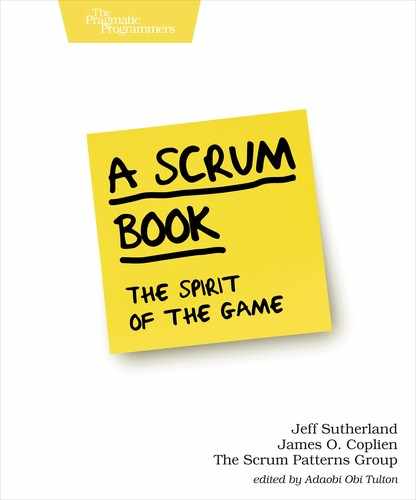Book Notations
Good patterns not only work together as elements of a grammar or language that can generate countless system variants, but their names also enrich the design vocabulary in the everyday spoken and written language of organization design discourse. So the term Sprint Review is three things. First, the Sprint Review is the name we give to a group of people who assemble for a time-boxed interval each ¶46 Sprint to assess the state of the product increment. We can point to that group of people and say, “Oh, look, they’re having their Sprint Review over there right now.” You can see it, point to it, and refer to any instance of it by name. Second, it describes the process one uses to create such a gathering, and the process can be found in writing under the name ¶35 Sprint Review in this book. You notice that the name begins with the curious prefix ¶35, to be read: Pattern 35. The patterns appear in the book in numerical order according to this prefix. Lastly, Sprint Review becomes a term that we use in our everyday language as we discuss our Scrum implementation, how it is going, and how to improve it.
This book frequently uses pattern names in this latter sense, as though they were ordinary English phrases. We try to introduce patterns in the book before referring to them in this way. But, still, we call out each use of such terms as a pattern, so as to distinguish the words from vernacular English. The traditional pattern literature dating back to the late 1970s has always distinguished pattern names in a small caps typeface. However, since there were technical issues that prevented us from using the preferred typeface, our work-around is to distinguish patterns with a prefix that includes a ¶ character and the pattern number as described earlier. But since a page full of such prefixes (and for those using electronic books or reading this on the web, a page full of hyperlinks) could potentially be too distracting, only the first reference to a given pattern within a given section will appear this way; subsequent references appear in a distinguished typeface. The book often refers to organizational patterns from other sources, though the section Patlets includes a synopsis of each one called a patlet. When we reference one of those patterns, we give its name, its pattern number (with the perfunctory ¶) and a reference (page number or hyperlink) to the patlet text within the book. For example, we would refer to Community of Trust as ¶95 Community of Trust.
